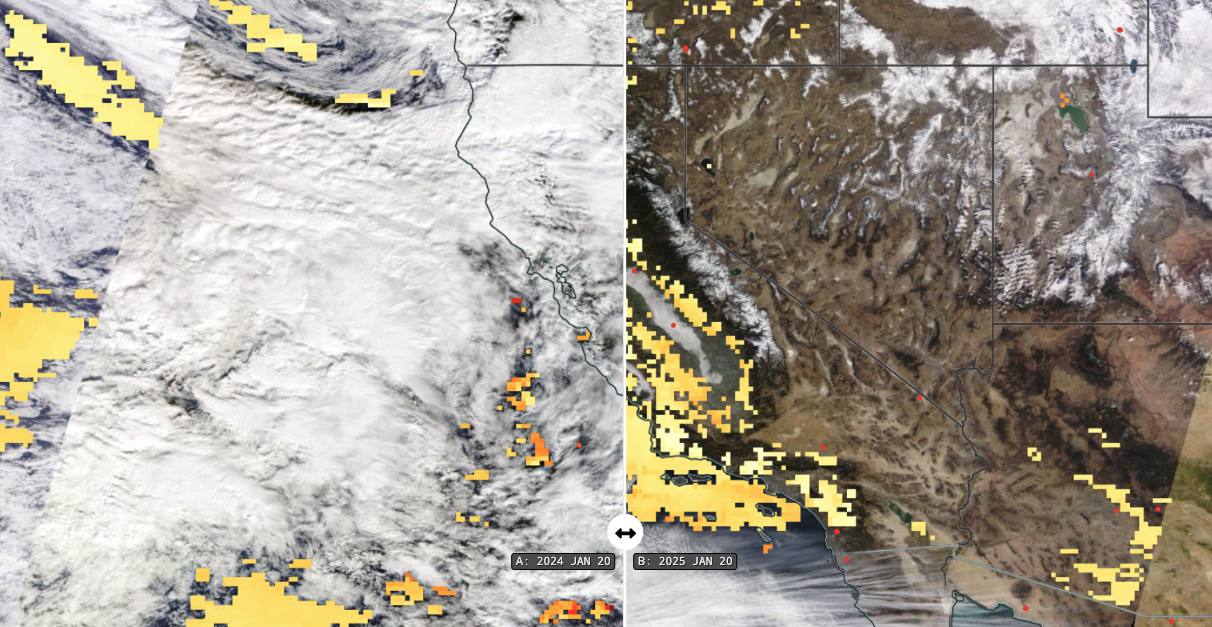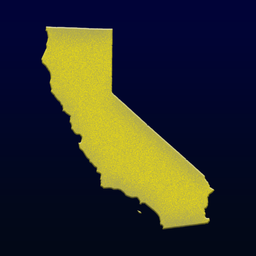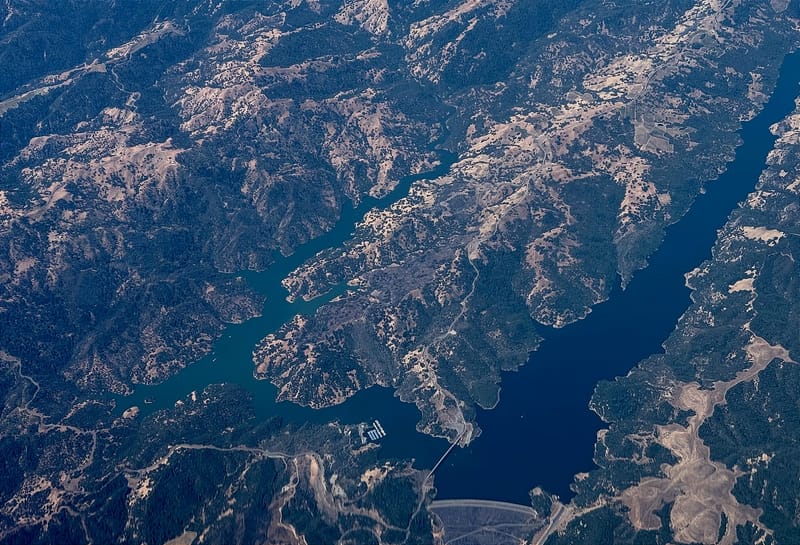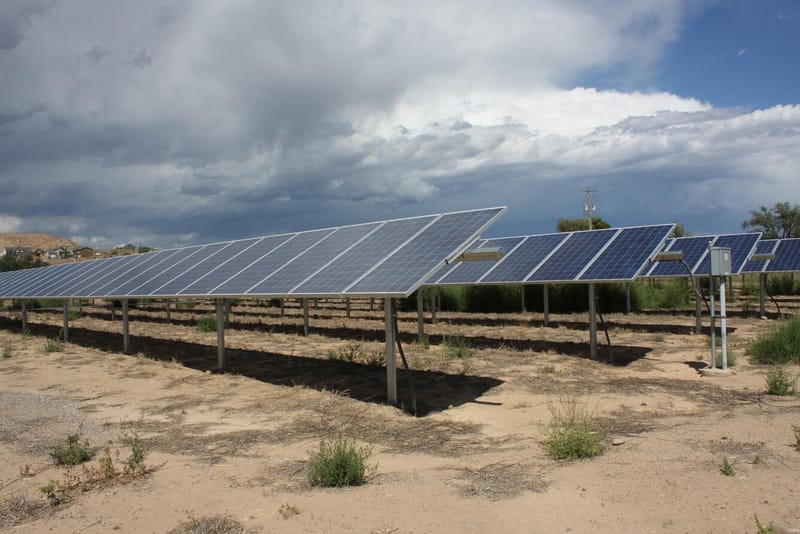After record-breaking wildfires, energy incentives take on new urgency in California
A closer look at the January 2025 Southern California wildfires through NASA satellite data—and what federal energy incentives reveal about adapting to California’s shifting climate risks.
California’s 2025 wildfire season didn’t wait for summer. In early January, fueled by unusually dry conditions and powerful Santa Ana winds, a series of fast-moving fires tore through Southern California, destroying more than 16,000 structures and burning over 50,000 acres in just a matter of days.
But as recovery efforts continue across Los Angeles, Ventura, and San Diego counties, a parallel question has emerged: What policies and tools exist to reduce the risks Californians now face year-round?
Among the most significant is a new suite of federal energy incentive programs made available through the Inflation Reduction Act (IRA). These programs—now active in California—are designed not only to reduce emissions but to help households adapt to a warming climate, particularly when it comes to energy resilience, air quality, and building performance in disaster-prone areas.

What NASA's Satellite Maps Reveal
NASA Worldview imagery captured on January 20, 2025—just days after fire containment efforts intensified—offers a rare dual view of the event. On one side of the map, aerosol optical depth data reveals elevated particulate levels drifting across Southern California, a proxy for hazardous air quality. On the other, thermal anomaly layers highlight the hotspots where fires were still active.
These visuals offer more than just a snapshot—they illustrate the multi-dimensional impact of climate-driven fire events: destruction on the ground, and unbreathable conditions in the air.
The Unfolding Pattern: Fire Season Without a Pause
The state’s fire season is increasingly less seasonal. A wet autumn in 2024 allowed vegetation to flourish, followed by a sharp drought and a historic January wind event—conditions that helped ignite the Palisades Fire, the Eaton Fire, and several others within days of the new year.
- The Palisades Fire, in Pacific Palisades and Malibu, destroyed 6,800 structures.
- The Eaton Fire, centered in Altadena and Pasadena, is now the second-most destructive in state history.
- The Hughes Fire burned near Castaic Lake, while the Kenneth and Border 2 Fires spread through Ventura and eastern San Diego County.
What’s striking isn’t just the speed or scale of these fires—it’s the timing. January firestorms are not typical, but as researchers from UC and international climate organizations have noted, the line between "fire season" and "off-season" has been eroding for years. In 2025, it appears to have vanished entirely.
How Climate Policy Intersects with Disaster Recovery
In response to these growing threats, the Inflation Reduction Act includes funding for residential energy improvements aimed at long-term resilience. These policies are not wildfire programs in name, but they increasingly overlap with the state’s evolving climate reality.
Through the Home Electrification and Appliance Rebates (HEEHRA) program, low- and moderate-income households in California may qualify for up to $14,000 in support to replace outdated appliances, improve electric systems, and install efficient heating and cooling systems—many of which also filter indoor air during smoke events.
The Home Efficiency Rebates (HOMES) program, also part of the IRA, supports broader whole-home energy upgrades, such as insulation, air sealing, and performance-based improvements that reduce energy use and strain on the grid during extreme weather.
While these programs were not designed in response to any single disaster, they reflect a growing federal emphasis on resilience—not just mitigation. And in fire-prone areas of California, energy improvements now serve a dual function: adapting to climate pressures while reducing the emissions that contribute to them.
Supporting Households in the Aftermath
As fire cleanup and rebuilding continue across Southern California, affected residents may also be eligible for immediate relief through state and federal aid. Los Angeles County workers have had multiple opportunities to apply for Disaster Unemployment Assistance, while a $2.5 billion relief package signed by Governor Newsom is helping fund evacuations, hazardous waste removal, and school rebuilding efforts in the region.

These emergency measures are critical—but so is what happens in the months to come. As rebuilding begins in neighborhoods from Malibu to Altadena to Otay Mesa, the intersection of housing, energy, and climate risk is clearer than ever.
What Comes Next
California’s recent fires are not outliers—they are part of an accelerating trend toward climate-driven emergencies that are harder to predict and costlier to recover from. While no single rebate or retrofit can eliminate that risk, the tools now available under the Inflation Reduction Act represent a meaningful shift: a way for households to prepare in advance, not just react after the fact.
For those rebuilding, renovating, or rethinking their energy systems in light of what happened this January, understanding what’s available is a practical next step. In the months ahead, state and federal agencies will continue rolling out more guidance, funding, and support—but the foundation is already in place.









